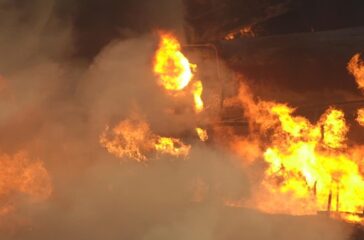A near-daily disaster; hazardous chemical accidents common across US
By Carey Gillam
Amid fears about the toxic chemicals released in the East Palestine train derailment, public officials have clamored to reassure community members that the resulting contaminated air, water and soil is being cleaned up, and their tiny Ohio town made safe.
 EWG
EWG